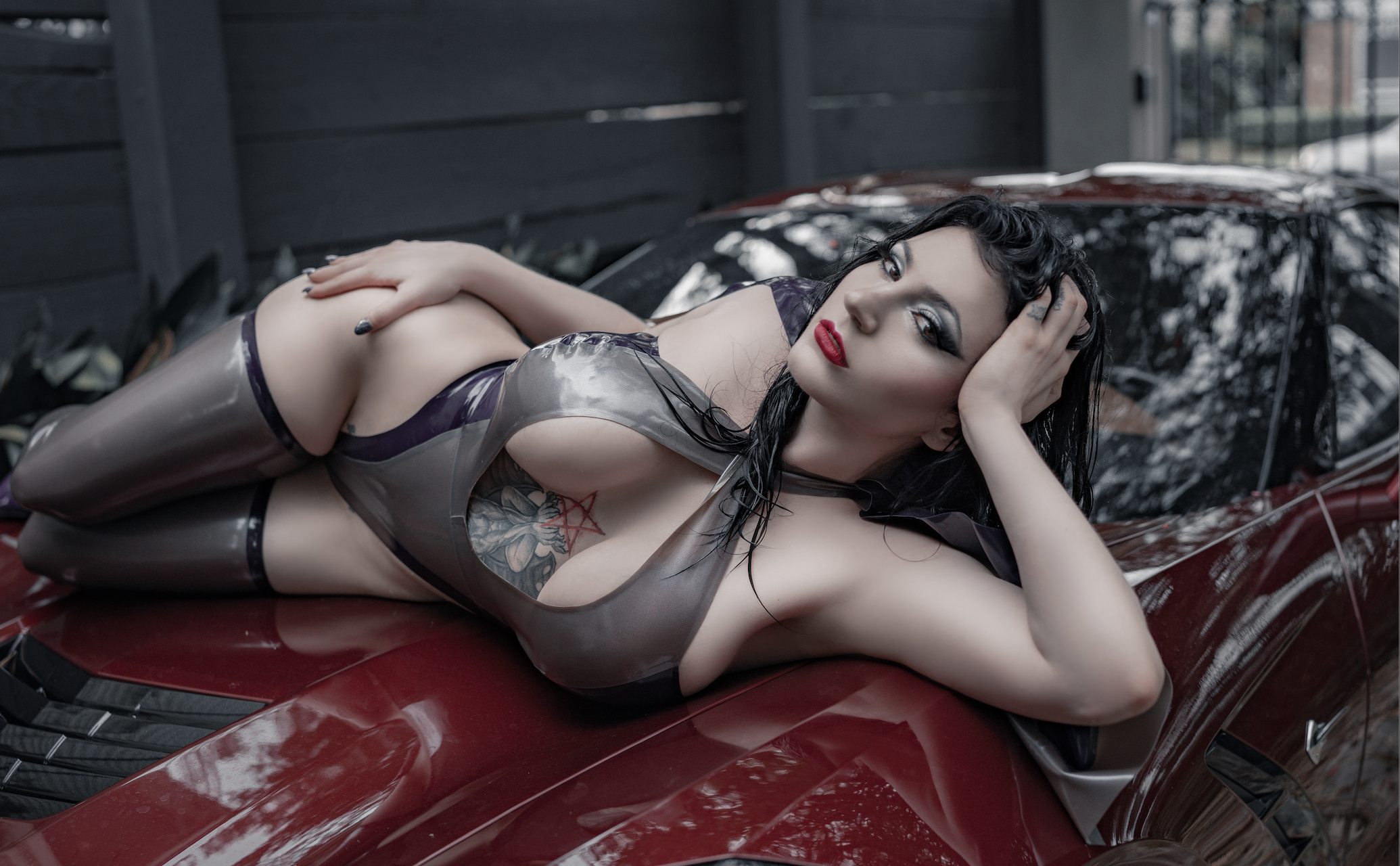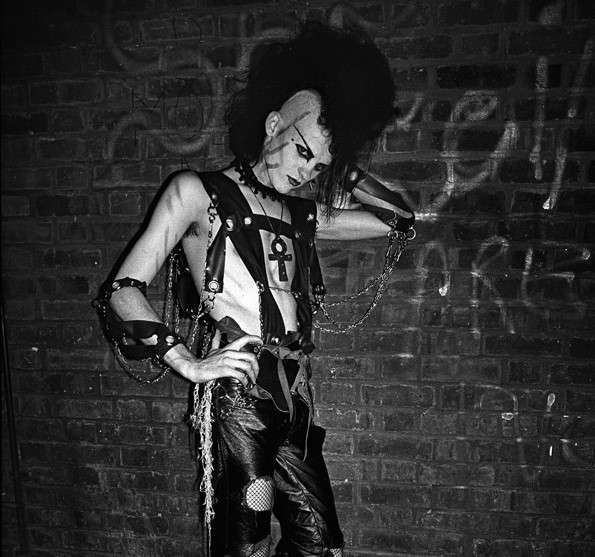
The evolution of Goth fashion throughout time has been a morbidly curious development. A Goth becomes used to being stared at and considered different for their all-black attire, extreme makeup, heavy jewelry, and killer hair. However, while some deem the dress of the "Outsider" as "Satanic," others have appreciated the dark, mysterious, and dramatic style so much that it has inspired iconic high-fashion designers such as Alexander McQueen and Thierry Mugler.
At the heart of Goth fashion is an emphasis on individuality. Goth can have many meanings, and those meanings come with unique interpretations of style, a testament to expressivity. You will often find dark colors, intricate details, and dramatic accessories on a gothic individual, from lace and leather to velvet and fishnets. The materials used in Goth fashion help create a sense of drama and depth that is visually compelling.

Far from being just a fashion trend, Goth fashion is a form of self-expression that challenges conventional norms. What started as traditional mourning attire has grown into a diverse cultural phenomenon, incorporating influences from music, literature, various social movements across the decades, and more.
Now, let us take a look at where Gothic fashion all began.
Historical Origins of Goth Fashion
So, why black? Since ancient times, the color black has been associated with death. The Ancient Egyptians had several symbolic representations of dark colors. Black, or kem, was the color of Fertility; Life and Death; Rebirth and Regeneration. Black was heavily associated with the Afterlife, and Osiris, the powerful Ancient Egyptian God of the Underworld and Eternal Life, was "depicted with black skin to symbolize his role as a deity of fertility and rebirth."[1]
Black basalt was often used in statues of Osiris and other funerary figures to emphasize this symbolic association with the Afterlife, and some sarcophagi were similarly painted black to reinforce the connection.

The known origin of wearing black to funerals dates back to the Ancient Roman Empire, when citizens would don a dark-colored wool toga called a toga pulla, and the dark color symbolized their grief for their loved one.[2]
Additionally, the upper echelon of undertakers in Ancient Rome, named libitinarii, wore distinctive black clothing and black hats when performing their funerary duties.[3] Darker colors had been reserved for the wealthier individuals for hundreds of years, as dyes were expensive and inaccessible to the ordinary person.

In medieval England, it was customary for women to wear black caps and veils after their husbands' deaths. However, in countries like France or Spain, the color white was worn when mourning, especially for widows.[4] In the Georgian Era (1714-1837),[5] custom dictated that only royals could wear black while mourning.
As the aristocracy looked to mimic the royal family, they began to adopt the custom - even if it meant paying extra sumptuary fees, which stemmed from "Laws made for the purpose of restraining luxury or extravagance, particularly against inordinate expenditures for apparel, food, furniture, or shoes, etc."[6]
Soon enough, sumptuary laws regarding mourning dress were abolished,[7] leading us to when we most famously know the origins of Goth fashion to be - The Victorian Age.
The Victorian Age
The Victorian Age (1837-1901)[8] saw the true expansion of black being worn while grieving. Most famously, Queen Victoria would wear her black mourning gowns for 40 years after her husband, Prince Albert, died in 1861. Thanks to the Queen, black became customary for all classes of people to wear when mourning.[9]
Although wearing black in mourning was now widespread, there were still rules on how mourning dress was to be worn. Women had multiple periods of mourning, called "deep," "ordinary," and "light." After death, women would be in deep mourning, clothed in black dresses and bonnets without decorative trims. Black veils, gloves, shoes, and accessories were also worn.
“I don't wear black because it becomes me. I wear mourning because it corresponds with my feelings.
”
In ordinary mourning, the black veil could be lifted; women could decorate themselves with ornate jewelry, and white trim could be added to dresses. Light mourning meant that lilac, purple, and grey were all acceptable colors for women to wear alongside the customary black. This period of dress would eventually inspire the Romantic Goth aesthetic.

Men in the Victorian Age did not have as many rules regarding mourning dress. They were expected to return to work as soon as possible after the burial to support their grieving family. The choices were minimal—men could wear a long crepe band around their hats called a "weeper."
The larger the width of the weeper, the closer the relationship was with the deceased. In addition, men could wear black armbands or a black ribbon pinned to their lapel, but these accessories were optional.[10]
Goth Fashion in The Early 20th Century
Between the Victorian Age and the beginning of Goth music in the 1950s, there are documented instances of Gothic fashion every decade. Though not yet a subcultural movement, those who felt pulled to a darker side of being were now finding the freedom to express themselves through their clothing. Here is an example of some of the earliest Goths from 1910:

Theda Bara, one of America's first movie stars, was Madame Mystery indeed. The first image of her is from the film Sin (1915), which was widely successful but controversial due to themes of "suicide, lust, Roman Catholic sacrilege, and love triangles."[11]
Sounds like a damn good time to me! Many in society, however, did not feel the same. The Pittsburgh Board of Welfare and the Kansas Board of Censorship condemned the film, which has since been lost to time.

This next image is from A Fool There Was (1915), which has been preserved in the National Film Registry by the Library of Congress, deeming it "culturally, historically, or aesthetically significant."[12]
In the film, Theda plays a psychic Vampire who seduces men only to ruin their lives. Same, girl. Fortunately, A Fool There Was is one of Theda's six surviving films, and it can continue to inspire the dark and macabre.

In the 1920s came a wave of Egyptian Revival that swept through the entire globe due to Howard Carter's 1922 discovery of Pharaoh Tutankhamen's tomb in Luxor, Egypt.[13] In women's fashion, this manifested as bold, black eye makeup, jeweled embellishments in headpieces, and beaded necklaces that have since become associated with the Flapper style.[14]
“The reason good women like me and flock to my pictures is that there is a little bit of vampire instinct in every woman.
”
Since then, Egyptian symbols, images, and motifs have continued to be referenced throughout the decades in visual art, fashion, architecture, and more. Below are pictured four Russian Dancers in Egyptian Revival dress, 1925.

Goth Fashion in Film of The Mid-20th Century
Let's fast-forward to the 1950s and 60s when the roots of modern Gothic iconography began. One of the first Gothic icons, Vampira, created by former model Maila Nurmi, became a TV sensation in 1954.
Nurmi was inspired by Snow White's Evil Queen and bondage models of the time in crafting the look of her character, characterized by pale skin, black hair, pointed eyebrows, and a pencil-thin waist, which she claimed to be a mere 17 inches in circumference.
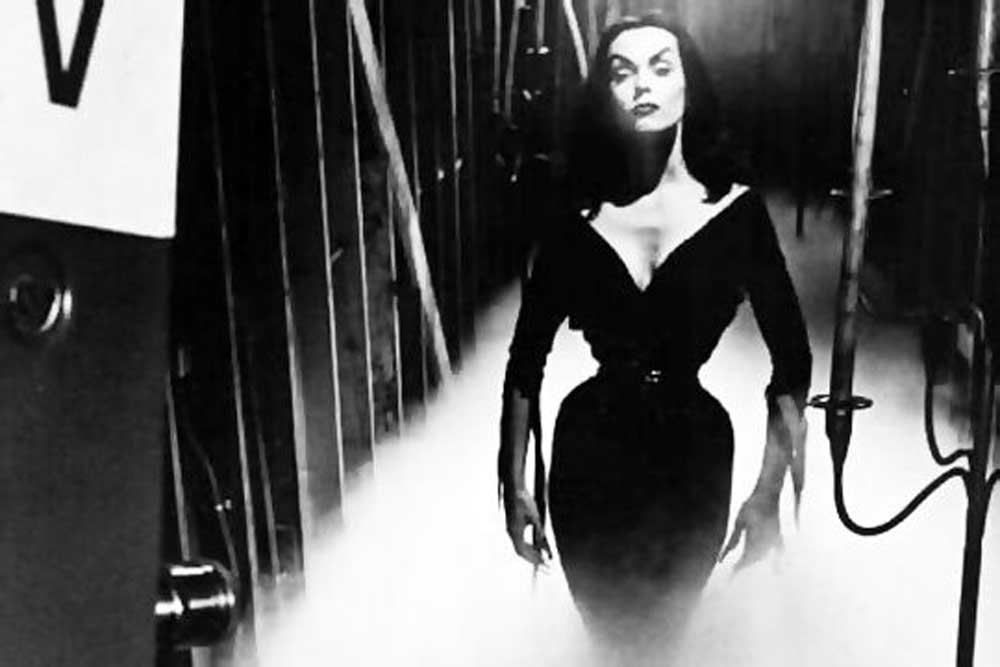
Her haunting elegance and deadpan wit captivated late-night television audiences and laid the groundwork for gothic beauty standards in media. Though her show lasted only a short time, Vampira’s influence endured. She became a blueprint for the “glamorous ghoul” archetype, bridging horror and high style in a way that would immortalize her as a Creature of the Night.[15]
“A scar on the hand the hand might be quite continental, but demons are a ghoul's best friend.
”
The following iconic Gothic figure(s) would be brought to life in 1964,[16] when The Addams Family TV series was created. The femme fatale of Morticia Addams, Gomez's romantic eccentricity, and their children's morbid quirks, Wednesday and Pugsley, would solidify the Addams Family in pop culture history.
The show captured the audiences' imaginations and led to numerous adaptations, most notably the successful live-action movies The Addams Family (1991)[17] and Addams Family Values (1993),[18] directed by Barry Sonnenfeld.
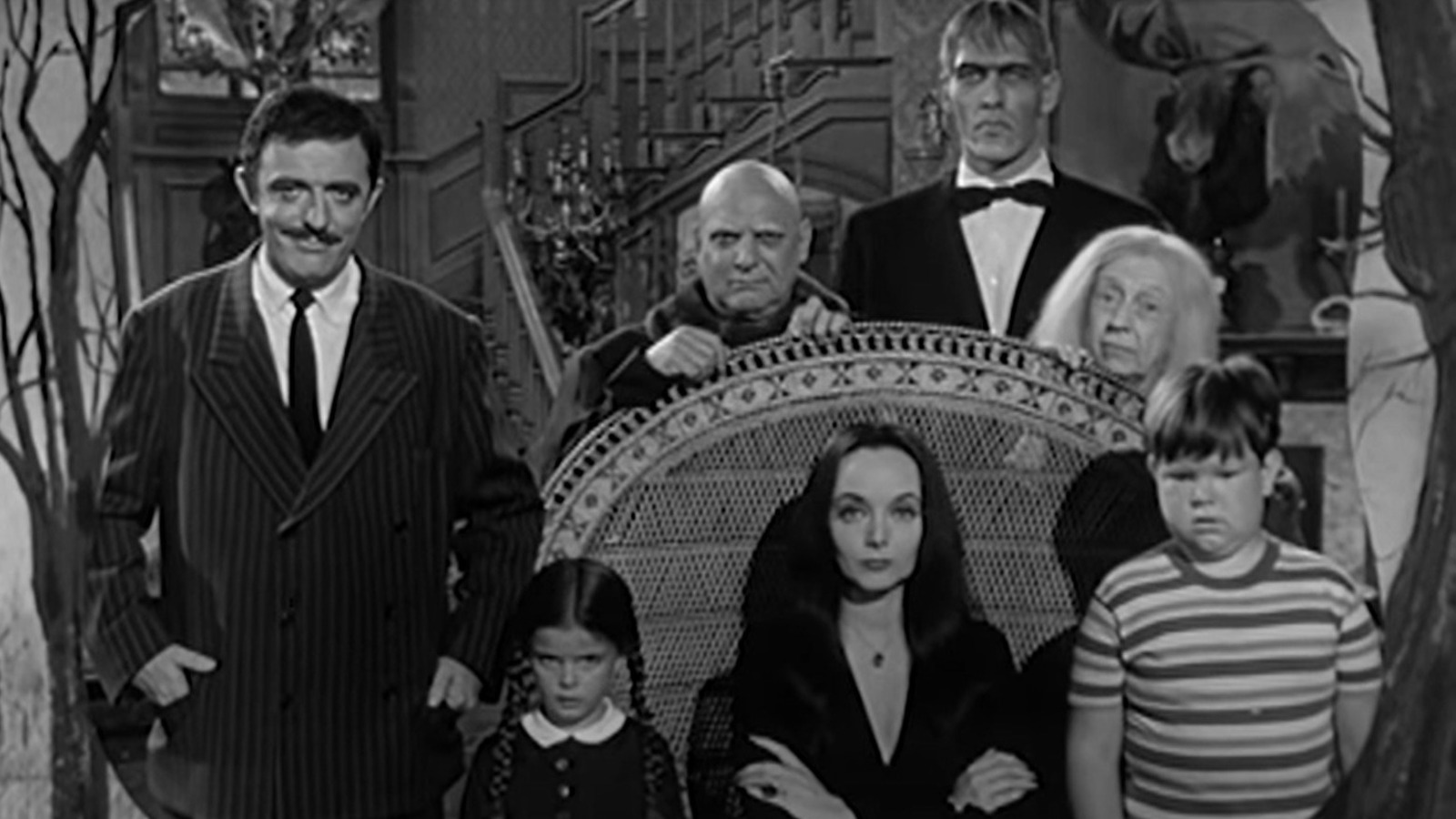
Morticia became revered not only for her haunting beauty but for her intelligence, passions, cleverness, and deep love for her family. The Addams Family lives in the hearts of many, embracing dark, morbid humor alongside the enduring bond of a family of outsiders.
The show and its characters continue to resonate with generations today—visually and emotionally. As for fashion, Morticia and Wednesday left a lasting impression, embodying a blend of sophistication, darkness, and wit that Goths can only hope to imitate.
“Normal is an illusion. What is normal for the spider is chaos for the fly.
”
The Munsters were introduced to audiences in 1964, the same year as The Addams Family, bringing a more comedic yet equally macabre twist to American television. This unconventional family of classic monsters, featuring the Frankenstein-like Herman Munster, the vampiric Lily, and their werewolf son Eddie, offered a satirical spin on suburban life.
While The Munsters leaned heavily into parody and camp comedy, the visual styling of Lily Munster, with her flowing gothic gowns, vampiric grace, and dark hair with a white streak, became an unexpected style icon.[19]

While Morticia Addams may outshine Lily Munster in the level of pop culture presence and influence, both have earned revered places in the Goth Hall of Fame. Many Romantic Goths look towards these Ladies of the Night for fashion inspiration.
How Goth Music Inspired Goth Fashion
In 1956, Jalacy "Screamin' Jay" Hawkins released the first recognized Goth song, "I Put A Spell on You." Next was Bauhaus' "Bela Lugosi's Dead" in 1979, which has more widely been considered the beginning of Gothic Rock.[20]
More Gothic Rock music would follow with bands like Joy Division, The Cramps, Christian Death, and Cocteau Twins (my personal favorite) rising to fame. Music would become intertwined with fashion as band members performed in a new, dramatically dark aesthetic, inspiring their fans to emulate their looks.

In the late 1970s, the bands that would most heavily inspire Trad Goth fashion were Siouxsie and the Banshees, Sisters of Mercy, and The Cure.[21] Siouxsie Sioux is widely regarded as a pioneer of goth fashion, known for her dramatic black makeup, teased hair, and punk-meets-Victorian style.
Her bold aesthetic—featuring dark eyeliner, fishnets, leather, and lace—helped define the visual language of the emerging Goth subculture in the late 1970s and early 1980s. Her look, which combined elements of Goth and punk, became iconic among alternative youth, influencing generations of Goth fashion enthusiasts.

Siouxsie was among those influenced by Egyptian aesthetics, seen below dressed as Bastet, the Egyptian Cat Goddess, in 1988.
Those inspired by Siouxsie Sioux's style wore flowing skirts, corsets, fishnets, and dramatic coats layered over platform boots or stompy heels. The look was pulled together with chokers, silver jewelry, and lace gloves—feminine but sharp.
“I think a certain amount of anger has been a fuel of mine, if you want - but also some sort of sadness, and plain mischief, of course.
”
Makeup was unapologetically bold: pale foundation, intense liner, and black or blood-red lips. Hair ranged from slick jet-black bobs to wild, teased manes, often dyed inky or jewel tones. Androgyny in Goth fashion also became prominent as people of all genders embraced dramatic makeup, statement hair, and jewelry. It was gothic elegance with a middle finger to the mainstream, still turning heads today.

Goth Rock would inspire goth fashion through the 1980s, ’90s, and beyond. As the subculture grew, so did its musical and stylistic diversity. Goth music splintered into distinct subgenres like deathrock, darkwave, ethereal wave, and coldwave—each bringing its own mood and aesthetic influence to the scene.[22]
In the mid-80s, Electro-Industrial (or Aggrotech) gained traction thanks to bands like Skinny Puppy, delivering a harsher, more abrasive sound than the cleaner structure of Electronic Body Music (EBM).

Even harsher than Aggrotech is Industrial, which is considered by some to be "the most abrasive and aggressive fusion of rock and electronic music,"[23] from which emerged Industrial Goth fashion: a look defined by PVC, mesh, combat boots, and a dystopian, post-apocalyptic edge. Fashion fused with function—tactical, defiant, engineered for the dancefloor or the apocalypse, whichever came first.[24]

At the same time, another subgenre of Goth fashion was being created. Romantic Goth fashion emerged in the ’90s from the ethereal wave and goth rock scenes. It drew heavily from the Victorian Age, reviving full-length black gowns, corsets, lace adornments, parasols, and jewelry that was simultaneously statement and dainty.
Dark colors like red wine, aubergine, forest green, and midnight blue were woven into the palette, adding effortless glamour and a sense of antique opulence. Silhouettes were soft yet structured, emphasizing drama, elegance, and a touch of sorrowful romance.

Romantic Goths often dress like haunted brides or gothic heroines, channeling the melancholy beauty of Pre-Raphaelite paintings[25] and classic Goth cinema. This style would go on to inspire further subgenres like Gothic Lolita, Vampire Goth, and Elven Goth.
“To die as lovers may—to die together, so that they may live together.
”
Steampunk is also a close cousin to Romantic Goth, although it was more influenced by the Industrial Revolution (the real one, from 1760 to 1840, not the music). Romantic Goth fashion is an homage to the past, embraces tragic beauty, and enchants anyone lucky enough to view it.
Goth Fashion in the Modern Age
As the decades approached the turning of the millennium, goth styles such as Cybergoth and Mall Goth emerged. Cybergoth, inspired by music genres like Aggrotech, Synthpop, and Futurepop, was a much brighter interpretation of Goth.
Cybergoths wore bright neon colors, synthetic dreadlocks called Cyberlox, goggles and respirators adorned with radioactive symbols, multiple layers of textured nylon, leg warmers, and huge platform boots. This style was most prominent in the late 1990s and early 2000s and is one of the most recognizable subgenres of Goth fashion.[26]

"Mall Goth" was not considered an authentic Goth fashion style due to its lack of Gothic music foundation. Typically, the music tastes of a Mall Goth leaned more toward metal, specifically listening to nu-metal such as Korn and Slipknot. Their style was characterized by fashion sold at Hot Topic and VampireFreaks, with brands such as Tripp, Punk Rave, and Shrine gaining traction.[27]
“"You look like a Goth factory exploded all over you!" he called as she ran down the hall. "Love you, too, jackass!"
”
Mall Goth combines emo, goth, and nu-metal influences, and you've probably seen them lurking around your local mall. Once considered an insult to be a Mall Goth, the Goth community has mostly relaxed their elitism surrounding what makes a "True" Goth, and many listen to the nu-metal bands of this time like Marilyn Manson, Nine Inch Nails, and Disturbed.

The 2010s saw the emergence of Nu-Goth and Pastel Goth, two styles that share certain visual elements but diverge sharply in tone. The emergence of major social media like Instagram helped these trends circulate with viral veracity. Aesthetics became everything.
Nu-Goth kept its roots firmly planted in darkness. The style embraced traditional goth symbolism like pentagrams, sigils, runes, and moon phases but layered it over modern silhouettes and minimalist streetwear. Outfits often featured mesh, oversized black tees with occult prints, harnesses, wide-brim hats, and platform boots. Brands like Killstar, BlackCraft Cult, and Demonia reigned the Nu-Goth style.

Pastel Goth, on the other hand, played with contradiction. Goth and Gurokawa (Creepy Cute)[28] came together, fusing the dark and macabre with pastel wigs, oversized bows, soft pink skirts, and cartoonish accessories paired with chokers, fishnets, and heavy eye makeup. Imagine if a haunted doll got lost in a Harajuku boutique.

The style exploded across Tumblr, where users embraced its dreamy, offbeat visuals—soft pastels clashing with skulls, crosses, and heavy eyeliner—as a form of playful rebellion and curated identity. Pastel Goth also gained traction in Japan, where its fusion of cuteness and creepiness fit seamlessly with the existing kawaii aesthetic.

From the late 2010s to now, Goth fashion has splintered into a labyrinth of microgenres—each more niche, experimental, and curated than the last. One of the most striking evolutions has been the rise of Goth Fetish fashion, a look that embraces latex, PVC, harnesses, mesh, and metal hardware with unapologetic eroticism.
Goth Fetish draws heavily from BDSM aesthetics and Berlin clubwear, blending body-conscious silhouettes with theatrical flair. The roots of this style go back to Goth’s early flirtations with taboo and transgression. However, it is more visible today thanks to social media, underground fashion shows, and avant-garde performers who revel in shock, sheen, and subversion.

Meanwhile, Goth has become a recurring guest star on the high fashion runway. Designers like Rick Owens, Ann Demeulemeester, and Dilara Findikoglu continue to reinterpret Goth through structured silhouettes, mourning veils, dark romanticism, and religious iconography.
Even brands once far removed from subculture have flirted with the aesthetic—think Valentino’s vampiric lace gowns or Simone Rocha’s Victorian mourning doll energy.[29]
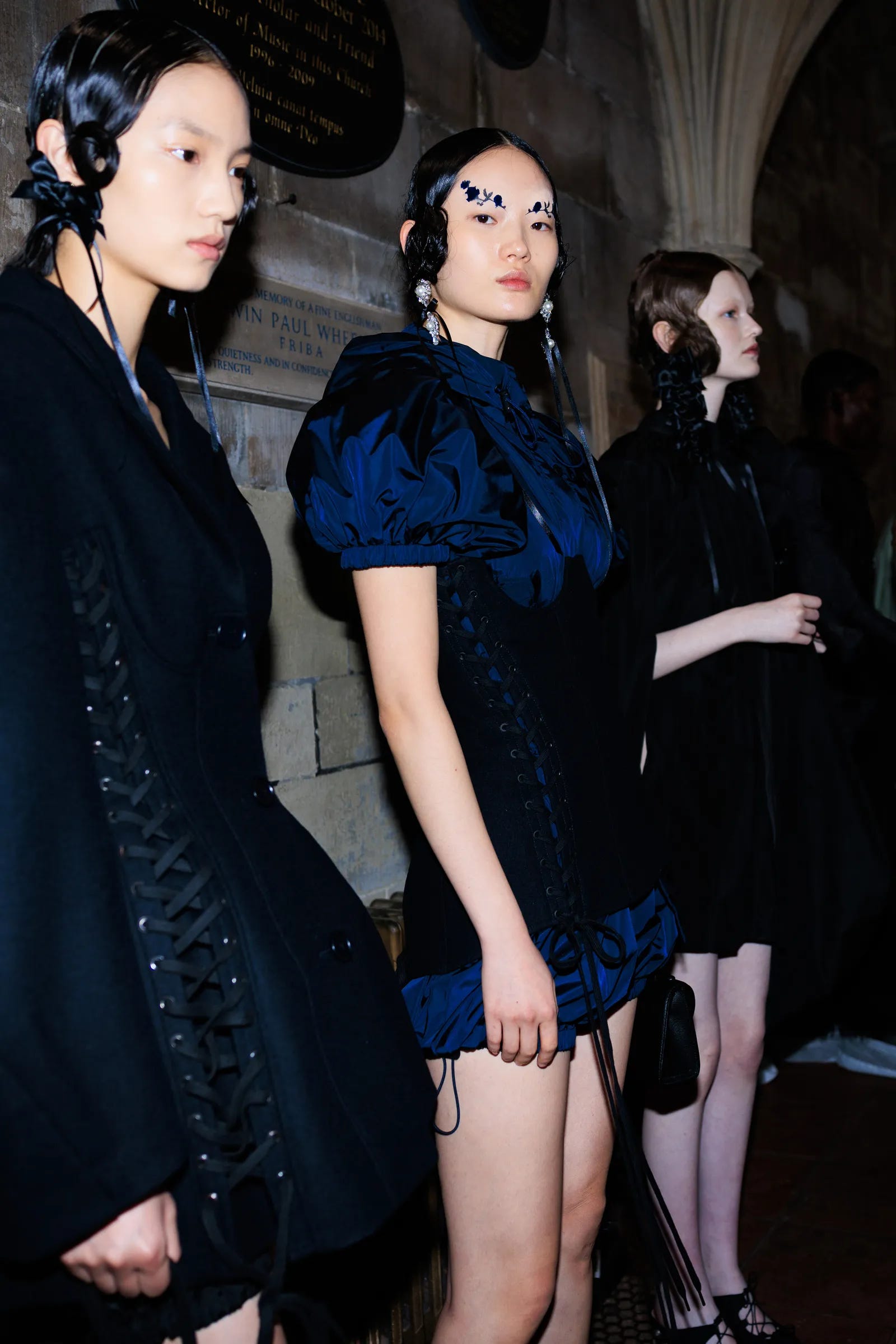
Beyond the runways and latex-clad club kids, Goth fashion has taken softer, more personal forms. The rise of TikTok and alt-IG gave birth to styles like “Soft Goth,” “Goth-lite,” and “Dark Academia,” which we'll dive into in the future.
At the same time, a growing number of Goths have turned away from fast fashion in favor of Goth's roots in DIY and slow fashion practices like thrifted black lace, handmade corsets, antique mourning jewelry, and heirloom pieces reworked with intention.
Global scenes are also reshaping the narrative, with vibrant goth subcultures thriving in Latin America, Japan, and Africa—proof that Goth has never been just one thing.[30] For those who live this life, being Goth is more than just fashion. It is about community, family, resilience through difference, and a desire to rebel against the norm in attitude, music, fashion, and beyond.
With Love ~ Beatrix Devine
Sources
1. Colors of Ancient Egypt and Their Role in Art, Religion, Magic, and Identity
2. National Memorial Planning - Why is Black Usually Worn at Funerals?
3. Roman Funerary Practices - Wikipedia
4. The Tradition of Wearing Black to Funerals: An Exploration Through Time and Across Cultures
7. Victorian Britain, A Brief History - Historical Association
8. The Victorian Age - Wikipedia
10. Mourning Fashion - William L. Clements Library
12. A Fool There Was (1915) - Wikipedia
13. "Beauty that endures": Egyptian revival in the 1920s
14. Lost in Time: Egyptian Photographer Captures Egypt’s 1920s Fashion
15. The Incredible But True Story of Maila "Vampira" Nurmi
16. The Addams Family (TV Series) IMBD
17. The Addams Family (1991) IMDB
18. Addams Family Values (1993) IMDB
19. The Munsters (1964-1966) IMDB
20. Goth Subculture - Wikipedia
22. Exploring the Subgenres of Goth Music - KTSW 89.9
23. Genres & Subgenres - DarkWaveRadio
25. Pre-Raphaelite Paintings - Tate
26. Cybergoth - Aesthetics Wiki
27. Mall Goth - Aesthetics Wiki
28. Pastel Goth - Aesthetics Wiki
29. Simone Rocha AW24, Victorian Mourning Dress, & the Commercialization of Death
30. World Gothic Day: Unveiling the Subculture’s Cross-Cultural Impact
[1] Vampire Lady
[2] Osiris: The Egyptian God of The Underworld
[3] Portrait of Queen Victoria - Historic Royal Palaces
[4] Lancaster History - Mourning Dress Featured Image
[7] Theda Bara in "A Fool There Was", 1915
[8] Russian Dancers in Egyptian Revival Dress, 1926
[9] Vampira
[10] The Addams Family TV Series Full Cast (1964)
[11] Lily Munster in The Munsters (1964-1966)
[12] Bauhaus Band Members
[13] Siouxsie Sioux of Siouxsie and The Banshees
[14] Siouxsie of Siouxsie and the Banshees dressed as Bastet, the Egyptian Cat Goddess, 1988
[16] Skinny Puppy
[17] Romantic Goth Couple in the Park
[18] Cybergoth
[19] Mall Goth Posing in a Graveyard
[20] Nu-Goth Style
[21] Kawaii Pastel Goth






